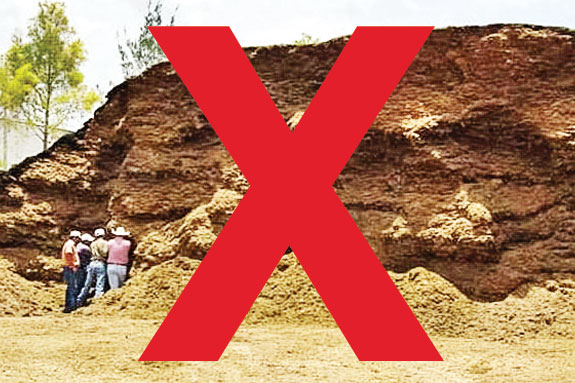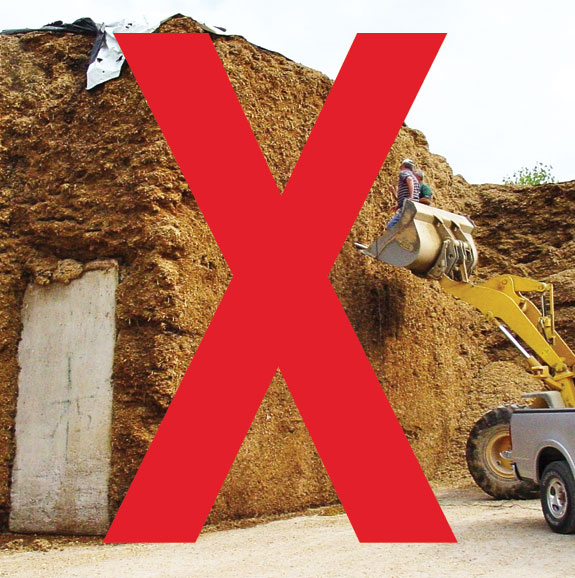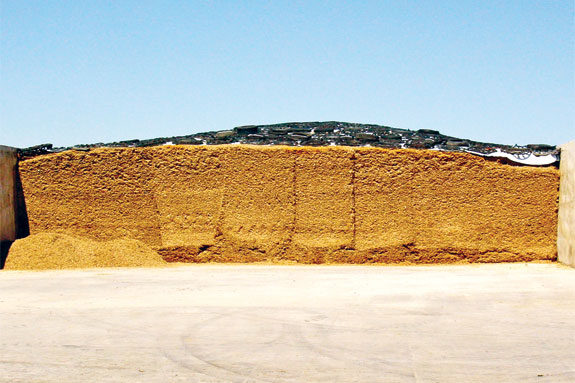In today’s complex and highly mechanized silage programs, consistently protecting employees, equipment and property throughout harvesting, filling and feeding does not occur without thought, preparation and training. It is better to take steps in advance to eliminate hazards than to rely upon yourself or others to make the correct decision when a hazard is encountered. As Dennis Murphy, extension safety specialist at Penn State University, points out, “We have nothing to lose by practicing safety, but we have everything to lose by not practicing it.”
Silage-related tragedy knows no age boundary as workers and bystanders of all ages have been injured or killed during silage harvest and feedout. Increasingly, stories involve bunker silos and drive-over piles.
Presented here are three of the hazards involved with managing silage and ways these hazards can be eliminated, reduced or controlled.

Entangled in or run over by machinery
Always pay attention to your surroundings and be alert at all times.
• Only experienced people should be permitted to operate equipment associated with silage operations from harvest through feedout.
• Keep machine guards and shields in place to protect the operator from an assortment of rotating shaft, chain and v-belt drives, gears and pulleys and rotating knives on forage harvesters, wagons and silage-feeding equipment.
• Adjust rear-view mirrors and install backup warning alarms.
• Keep non-workers away from traffic areas.
• Never allow people on foot (especially children) in or near a bunker or pile during filling or feedout.
Fall from height
The height of even properly filled bunker silos and silage piles can be cause for concern if not planned for, as it is easy to slip when covering or uncovering a bunker or pile, especially in wet weather.
• Install standard guardrails on all above-ground-level walls.
• Use caution when removing plastic or oxygen-barrier film, tires or gravel bags near the edge of the feedout face.
• Never stand close to a silage overhang, as a person’s weight can cause it to collapse.
• When necessary, use equipment operated from the ground to remove spoiled silage from the surface.
• Never allow a person to ride in a front-end loader bucket.
Crushed by an avalanche/collapsing silage
A major factor contributing to injury or fatality from a silage avalanche or collapsing silage is overfilled bunker silos and drive-over piles.

• Bunker silos and piles should not be filled higher than the unloading equipment can reach safely. Typically, an unloader can reach a height of 12 to 14 feet.
• Use proper unloading technique that includes shaving silage down the feedout face. Never dig the bucket into the bottom of the silage.
Undercutting creates an overhang of silage that can loosen and tumble to the floor. This is a situation that is quite common when the unloader bucket cannot reach the top of an overfilled bunker or pile.
• Never stand closer to the feeding face than three times its height.
• When sampling silage, take samples from a front-end loader bucket after it is moved to a safe distance from the feedout face.
• Fence the perimeter of bunker silos and drive-over piles, and post a sign, “Danger: Do Not Enter or Approach. Authorized Personnel Only.”
Spreadsheet software is available to assist livestock producers and their silage team in designing safe and efficient bunkers and piles. Click here for more information.
By combining the above listed advice with common sense management practices, producers can reduce the dangers associated with bunker silos and silage piles. After all, the top goal on any operation should be sending employees home safely. PD
PHOTOS
TOP RIGHT: When removing silage, shave down the feedout face rather than undercutting from the bottom.
MIDDLE RIGHT: Never stand closer to the face than three times its height. Feedout faces are unpredictable and silage can easily collapse onto people standing below.
BOTTOM RIGHT: Never climb into an unloader bucket. When sampling silage, take samples from a front-end loader bucket after it is moved to a safe distance away from the feedout face. Photos courtesy of Keith Bolsen.

Keith Bolsen
Professor Emeritus
Kansas State University








